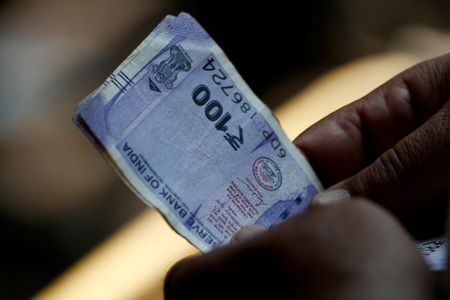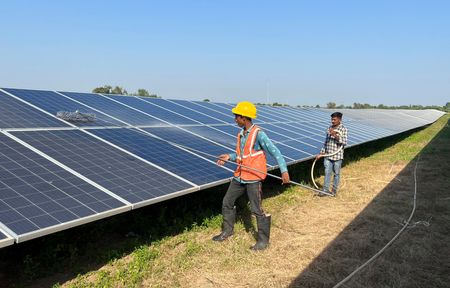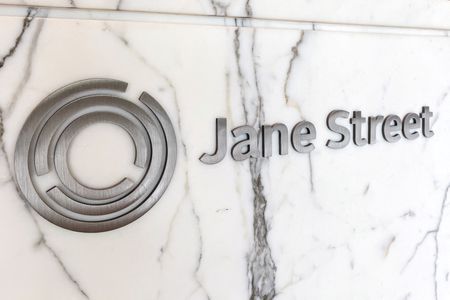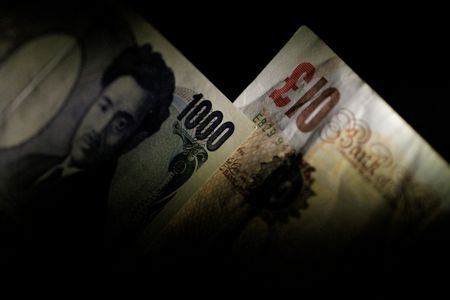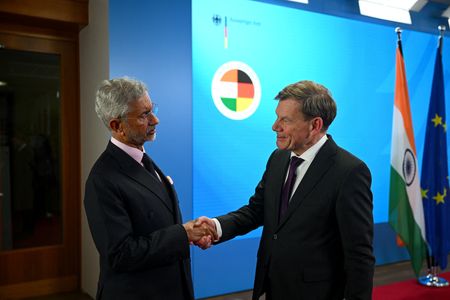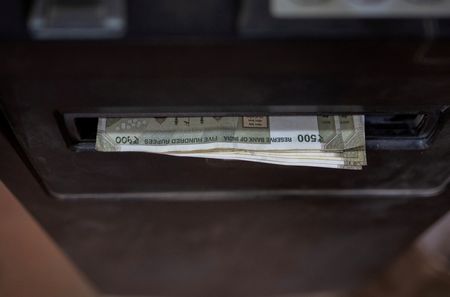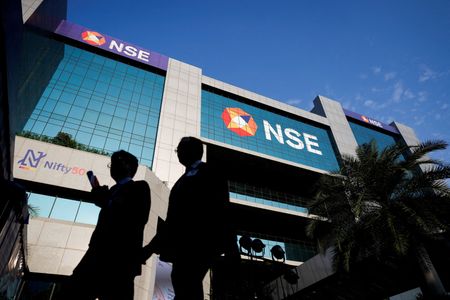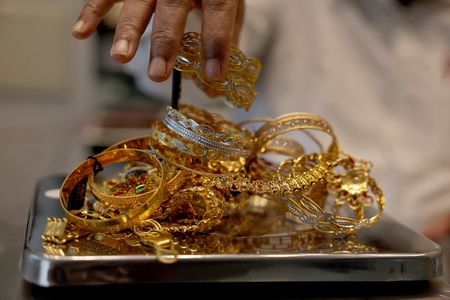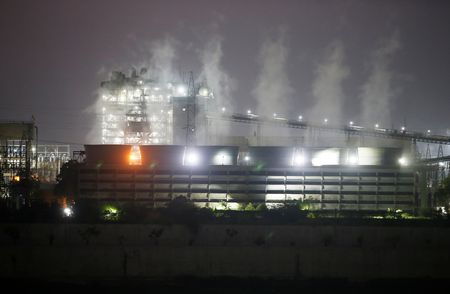By Vivek Mishra
BENGALURU (Reuters) -The Indian rupee will avoid a further dramatic slide after falling through 88 per U.S. dollar this week, according to a Reuters poll of foreign exchange analysts, but over one-third expect the currency to drift toward 90 as long as hefty U.S. tariffs on Indian goods stay in force.
The partially convertible rupee hit an all-time low of 88.33 per dollar on Monday before recovering slightly as the Reserve Bank of India (RBI) intervened, using some of its $690 billion in reserves to sell dollars and stem outflows.
So far this year, the rupee has fallen about 3%, weighed down by net foreign equity outflows of $15 billion, making it Asia’s worst performer as ties with the U.S. are badly strained over tariffs and New Delhi’s purchases of Russian oil.
“Much of the tariff impact is already priced in, so I don’t think the rupee will slide too fast from here,” said Aditya Vyas, chief economist at STCI Primary Dealer Limited.
Still, analysts polled on September 1–3 said the weakness is unlikely to reverse despite India reporting robust 7.8% economic growth last quarter, confounding expectations for a slowdown. The punitive 50% U.S. tariffs, among the steepest in the world, are threatening to curb trade and capital inflows.
The median of forecasts from 38 analysts predicted the rupee at 88.04 per dollar by end-September and 87.75 by end-November, compared with 88.15 on Wednesday.
A tiny retracement to 87.51 is forecast by end-February before a return to 88.00 within a year.
All of these forecasts were weaker than those in last month’s poll, with 14 analysts now expecting the rupee to fall to 89–90 per dollar compared with five in August, three in July and two in June.
Forecasts for six- and 12-month horizons were the widest in more than two years, underscoring uncertainty and fading conviction about the currency’s direction.
Some analysts said predicting rupee appreciation has repeatedly backfired over the past decade, with forecasters often wrong-footed as the currency has strengthened against the dollar only once in that period, in 2017.
“The rupee is somewhat overvalued, so depreciation has always been the norm for the currency and one-way appreciation has rarely lasted,” said STCI’s Vyas.
A handful of forecasters who correctly called last year’s trend – including brokerage Nirmal Bang, the top rupee forecaster in 2024 – expect fresh lows, projecting 90.30 per dollar within 12 months.
Teresa John, Nirmal Bang’s deputy head of research, says the rupee is set for more weakness in the months ahead thanks to trade uncertainty.
“The tariffs on India are now among the highest in the world, and that is also weighing on the rupee in the near term,” she said.
More than half of the top 10 rupee forecasters in the poll expect the currency to hit a new low over the next 12 months.
Among them, Sakshi Gupta, principal economist at HDFC Bank, said her forecasts assume the 50% tariffs remain in place, weighing on capital flows and India’s balance of payments.
“The RBI’s role would be to prevent panic selling rather than defend any particular level,” Gupta added.
She expects the rupee to weaken to 89.5 per dollar in a year but with a low risk of crossing 90.
(For other stories from the September Reuters foreign exchange poll)
(Reporting by Vivek Mishra; Polling and analysis by Rahul Trivedi and Susobhan Sarkar; Editing by Hari Kishan, Ross Finley and Kim Coghill)

